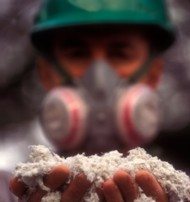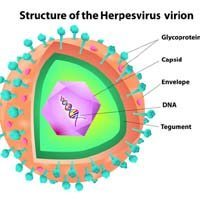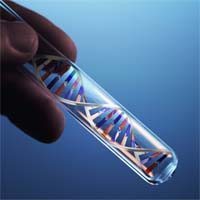Researchers Discover How Three Enzymes Influence Mesothelioma Risk
 University of Hawaii scientists have just released new research that helps explain how three enzymes may work together to determine mesothelioma risk.
University of Hawaii scientists have just released new research that helps explain how three enzymes may work together to determine mesothelioma risk.
Most people who contract malignant mesothelioma have a history of asbestos exposure. But scientists still are not sure exactly why some people are at higher risk than others.
Researcher Michele Carbone and his team at the University of Hawaii Cancer Center have spent years trying to understand the underlying mechanism of mesothelioma risk. Their new report is a big step forward. It shows how three molecules interact to determine a person’s risk profile. It also demonstrates how something as simple as aspirin might be used to modify that risk.
Three Molecules That Influence Mesothelioma Risk
BAP1 is a tumor suppressor gene. If it is mutated, the person is more susceptible to cancer. Dr. Carbone and his colleague Dr. Haining Yang were the first to discover that mutations in the BAP1 gene can cause mesothelioma.
In a separate study, Dr. Carbone and Dr. Yang discovered that asbestos triggers the release of the protein HMGB1. HMGB1 promotes inflammation and raises mesothelioma risk.
The new report shows how BAP1, HMGB1, and a third molecule called HDAC1 form a “trimer” – a trio of molecules that make up a macromolecule – that influences mesothelioma risk. When these three molecules are in balance, the trimer may improve mesothelioma outcomes.
But when BAP1 is mutated, the trimer is disrupted, raising the risk for cancer. HDAC1 helps modulate the release of HMGB1. Reduced BAP1 causes degradation of HDAC1. This leads to more cancer-causing HMGB1. Exposure to asbestos causes even more HMGB1 to be released, further disrupting the balance and raising mesothelioma risk even higher.
“Our findings explain mechanistically the observed Gene x Environment interaction in mesothelioma that occurs in carriers of germline BAP1 mutations exposed to asbestos,” Dr. Novelli said.
What Does Aspirin Have to Do with It?
Since HMGB1 increases mesothelioma risk, the researchers say testing for it could be useful for prognosis, especially in people with BAP1 mutations.
Aspirin (acetylsalicylic acid) can reduce HMGB1 activity. The UH team tried giving aspirin or other similar chemicals to asbestos-exposed mice with BAP1 mutations. They report that the experiment significantly reduced the number of mice that developed mesothelioma. Mice that did get mesothelioma lived much longer than expected.
The next step for the team will be to search for other chemicals or Native Hawaiian natural products that can block the activity of HMGB1. The hope would be to find something to reduce mesothelioma risk without the dangers and side effects of aspirin.
In the meantime, mesothelioma patients should not try to self-medicate with aspirin or any other drug. Many chemicals can interfere with the effectiveness of mesothelioma treatments and cause serious complications.
Source:
Novelli, F, et al, “BAP1 forms a trimer with HMGB1 and HDAC1 that modulates gene × environment interaction with asbestos”, November 30, 2021, https://www.pnas.org/content/118/48/e2111946118
“Gene x interactions may help reduce mesothelioma risk”, December 2, 2021, University of Hawaii News Release, https://www.hawaii.edu/news/2021/12/02/genex-mesothelioma-study/





